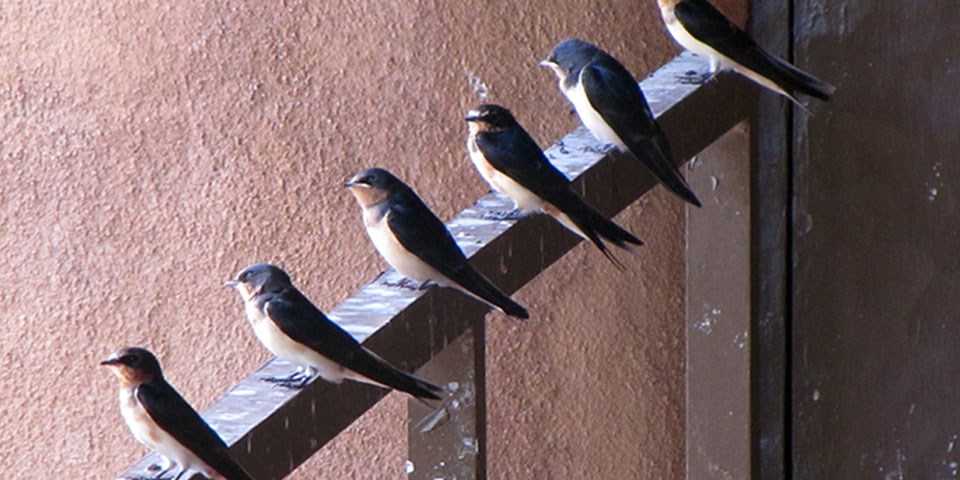
NPS Photo Every spring, the visitor center at White Sands National Park becomes a nesting destination for considerable numbers of freshly-molted barn swallows. Returning from their winter insect hunting grounds of Central and South America, they arrive in droves. Recognizing a barn swallow is easy. They are small with a slender body, long, narrow, pointed wings, and a prominent forked tail. Both males and females have bluish-black upper body parts and wing coloring. Their chests and throats are reddish-orange. In younger birds, the coloring of the throat, chest, and belly is less vivid. Around mid-May, male swallows will court a mate by spreading their tail feathers and singing while flying patterns above the nest site. Once a match is made, the pair construct a cup-shaped nest out of mud, grass, feathers, and twigs. The male fiercely guards the nest once it is built. The female lays a clutch of three to six eggs and incubates them for about two weeks. After hatching, both parents brood and feed the hatchlings. Amazingly, by two weeks of age the baby birds are largely able to function on their own. If a fledgling should happen to fall out of the next before it is ready, it is important for a ranger to use special gloves to carefully return it to the nest. This special care is needed to make sure the fallen chick is not harmed and to protect the ranger in case the baby bird is carrying disease. The areas beneath the eaves of the visitor center complex are popular places for swallows to build their nests. They are especially prevalent on the porch and patio, and experience has taught the birds to tolerate the park's many visitors. Because they raise their young so close to people, signs are posted around the visitor center to inform the curious that swallows are federally protected. This minimizes any potential harm that may come to these little birds. Why are they protected? Barn swallows are by no means considered to be an endangered species. However, they are included under the Migratory Bird Treaty Act of 1918 which prohibits disturbing the birds, their nests, or their eggs. Of course, there is an enormous benefit to having them around. Since barn swallows are so good at harvesting insects, they reduce the number of harmful bugs like black widow spiders and biting flies that could pose a potential problem for visitors. This relationship is beneficial for both parties—the birds get a good meal and visitors can enjoy a safer experience. Toward the end of the summer, groups of barn swallows and their young gather in enormous flocks to start their migration south to their winter homes—a flight that takes several months. Since insects are abundant at their winter habitat, the birds gorge themselves and recuperate. As the southern climate cools, their feathers molt and the northern flight begins anew. |
Last updated: August 21, 2020
